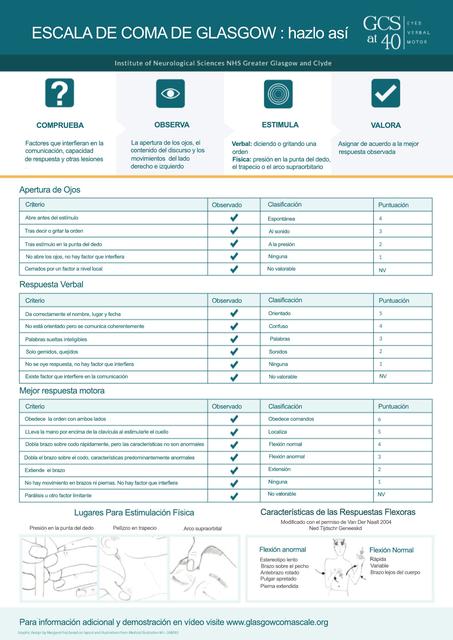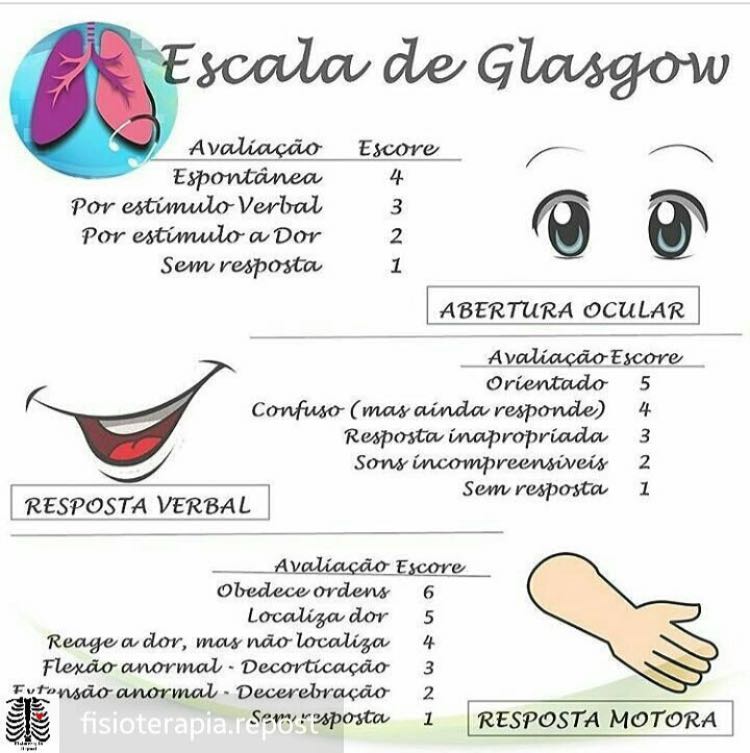

Second: the reliability of the scale can be high, but cannot be assumed, nor left to chance. If one or other response cannot be assessed, a total score cannot be derived but the information in the remaining responses of the scale can still inform management. It does provide a rough index in an individual but conveys less information than the scale. We had assigned numbers to the steps in each response so that they could be readily used in research the temptation to aggregate the 3 into a total score became irresistible! The total score is very useful as a summary of severity in groups and in classification. It remains the appropriate method for this purpose. The purpose of the Scale is to describe and communicate the condition of an individual patient by separate, multidimensional rating of their eye, verbal and motor responses. What pearls, pitfalls and/or tips do you have for users of the Glasgow Coma Scale? Are there cases in which it has been applied, interpreted, or used inappropriately?įirst: distinguish between the use of the Scale and its derived total or sum Score. The result was deliberately called simply, “ A practical scale for assessment of impaired consciousness and coma.” We aimed for a method that would be widely acceptable, covering the spectrum of degrees of injury from many causes – beyond specialist neurosurgical units where only a minority of patients are managed. Why did you develop the Glasgow Coma Scale? Was there a clinical experience that inspired you to create this tool for clinicians?Īs a junior doctor in the early 1970s, I saw that crucial decisions on patients with an acute brain injury were being taken on the findings of a chaotic mixture of many different, ill-defined systems for assessing their so-called “conscious level.” I saw how this created confusion about the severity of a patient's condition, how it undermined communication, and how this led to delays in detecting and acting on clinical changes and, most importantly, to avoid morbidity and mortality.Ī better system of assessment was also needed to support Bryan Jennett's interests in prognosis by relating a patient's early severity to their outcome.

These are often contracted versions of the GCS itself (the Simplified Motor Score (SMS) uses the motor portion of the GCS only) and are less well studied than the GCS for outcomes like long-term mortality, and the GCS has been studied trended over time, while the SMS has not. Simpler scores have been shown to perform as well as the GCS in the prehospital and emergency department setting (for initial evaluation).If individual institutions have concerns about agreement among providers, training and education are available from the GCS creators at. Reproducibility is usually good ( Reith 2016).A GCS of 8 should not be used in isolation to make a determination of whether to intubate a patient, but does suggest a level of obtundation that should be evaluated carefully.Correlation with outcome and severity is most accurate when applied to an individual patient over time the patient’s trend is important.The 3 parts of the Glasgow Coma Scale are charted independently, and the position can be recorded as NT (not testable), with an option of indicating the reason, e.g.In this circumstance, summation of the findings into a total Glasgow Coma Score is invalid. If a component is untestable, a score of 1 should not be assigned ( Teasdale 2014).All (eye, verbal, motor): sedation, paralysis, and ventilation eliminating all responses.The reasons include, but are not limited to: In some patients, it may be impossible to assess one or more of the three components of the coma scale.ACLS, ATLS, APACHE I-III, TRISS and WNS SAH Grading Scale). The GCS has been incorporated into numerous guidelines and assessment scores (e.g.The GCS has been shown to have statistical correlation with a broad array of adverse neurologic outcomes, including brain injury, need for neurosurgery, and mortality.The GCS allows providers in multiple settings and with varied levels of training to communicate succinctly about a patient’s mental status.


 0 kommentar(er)
0 kommentar(er)
